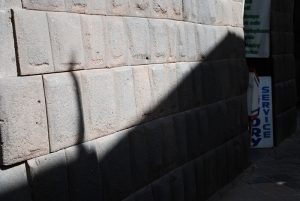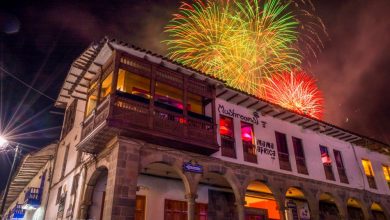Cuzco’s Stones Speak a Return to an Imperfect Future

The stones of Cuzco speak to me. They communicate, have life, and history.
Ernesto, the hero of Deep Rivers, by Peru’s José María Arguedas, felt the same. At the beginning of his journey, which is the central axis of the novel, he visits the Imperial City, where his father is from. In the stone wall on 7 Angelitos street I stumble on a graffito that says “Extirpation of Prejudices”. Once again the stones spoke to me.
[While the word extirpation seems strange in English, it has much history and resonance in Spanish. This word describes the efforts of the Spanish to forcefully stamp out Inca society and culture in the centuries following the invasion. In the graffito it is turned on its head to require the stamping out of anti-Indian prejudices, among others.]The word prejudice means the development of a judgment before one has any direct or real experience with a certain thing or situation.
Every time I say in my country that I should go to Peru, I feel that part of my society (certainly not all, but a big part) looks at me strangely. They are surprised and ask “what can you do in a country like that, or even more in a city like Cuzco.”

There is a prejudice today in Argentina. Nevertheless, Argentina is not so super developed as Peruvians might think. Believe me that even today in Argentina there are people who still maintain the belief that visiting Peru is to submit yourself to being in dirty places with undesirable people (as if Buenos Aires were not dirty and did not have undesirables). They think that Peruvians welcome tourists with bows and arrows.

The paradox is this. A society in decline thinks this. It is a place where the culture of work is being lost more and more each day and where the level of aggressiveness in people grows, perhaps sustained by the forces in power.
My response is simple. I keep coming back to Peru and to the marvelous Cuzco over and over. Time is never sufficient even in a lifetime to fully know it. Many of its people do not toss litter in the streets and dirty their city; they are well educated. Of course, nothing is perfect.

They weight of history is always there to forge a new future, whether for good or bad. With our fingertips we can touch the value of that history.
It is exquisite and delicious. Until I die I will always carry five happy kilos of extra weight from this amazing history.
In Cuzco people respect their roots, their original communities, and their native tongues. They do not forget them but show a devotion to them. From the Cuzqueños I developed a love and admiration for my own roots.
In my own country they tought me about San Martin, the hero of our independence , only in passing. But in Peru I cam to develop a greater admiration and love for him.
Peru is filled with young people who fight hard to grow; they know the culture of work. They make sacrifices ever day without having to think about something that is so habitual for us, “the law of least effort”.
As a Latin American they make me proud of Pachacutec–the great Inca Emperor, Túpac Amaru—the hero of an eighteenth century revolution, and of Machu Picchu which was never invaded.
It is true, they greet me with bows and arrows, in which they invest much significance; the bows and arrows of love.





El Cusco es lindo, claro, es un privilegio vivir aquí, pero a veces las piedras del Cusco no “hablan” bien del Cusco mismo, es decir, no siempre hablan de las cosas maravillosas y rescatables que tienen el Cusco y los cusqueños. No veo piedras románticas, sino sólidas, perdurables, resquebrajas a veces, pero sobrevivientes y críticas con la modernidad. Lo que sí abundan son los románticos del Cusco, tanto oriundos como extranjeros. Esos cantan glorias para el cielo sin pisar los problemas de la tierra.
Es verdad, pero si vivieses en Argentina y más aún en Buenos Aires te aseguro que el Cuzco es la gloria y los problemas de la tierra, aunque lo descreas son más profundos que los del Cuzco.